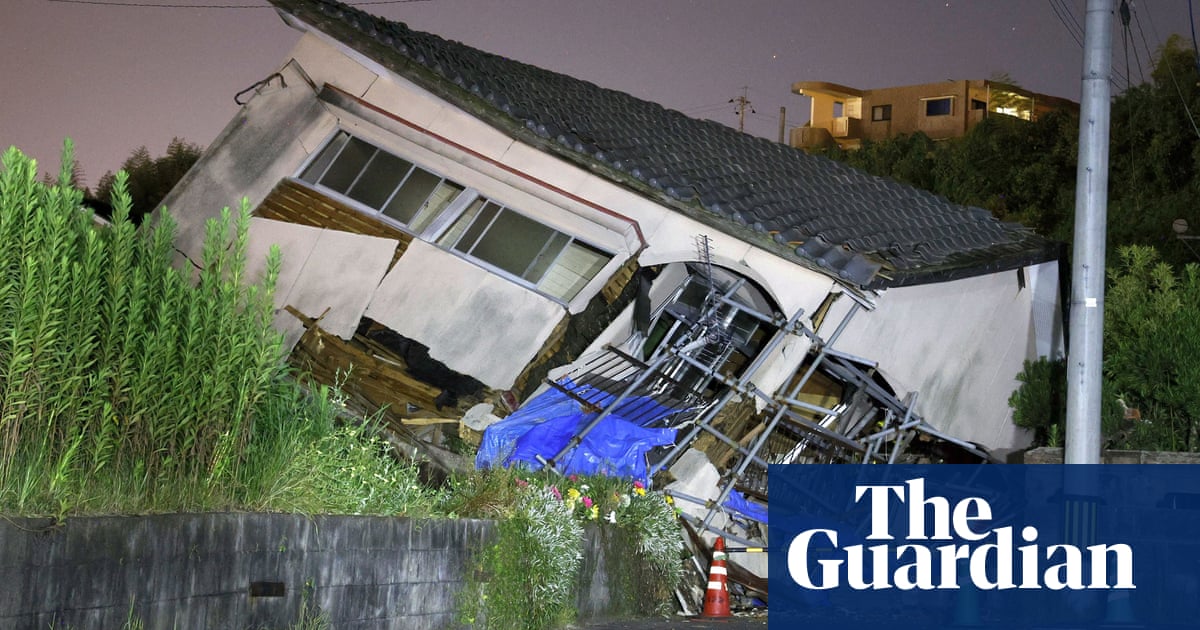Japan’s prime minister, Fumio Kishida, has cancelled a visit to central Asia this weekend after experts warned that the risk of a “megaquake” occurring off the country’s Pacific coast had increased following Thursday’s magnitude 7.1 earthquake in the south-west.
Kishida, who is battling low approval ratings and faces challenges to his leadership in a ruling party presidential election next month, announced his decision at a press conference on Friday.
He had been due to hold a summit with the leaders of Kazakhstan, Kyrgyzstan, Tajikistan, Turkmenistan and Uzbekistan in the Kazakh capital Astana on Friday evening and to meet the Mongolian president in Ulaanbaatar on Monday, according to the Kyodo news agency.
The Japan Meteorological Agency on Thursday issued its first-ever warning of the risk of a huge earthquake along the Pacific coast after a quake on the southernmost main island of Kyushu triggered a tsunami warning. No deaths or major damage have been reported.
The agency’s warning that the risk of a huge earthquake occurring along the Nankai Trough was higher than usual does not mean that a quake will definitely occur in the coming days. Public broadcaster NHK said Kishida’s overseas trip had been cancelled so that he could prepare for any eventuality.
The meteorological agency’s megaquake advisory warned that “if a major earthquake were to occur in the future, strong shaking and large tsunamis would be generated”.
It added: “The likelihood of a new major earthquake is higher than normal, but this is not an indication that a major earthquake will definitely occur during a specific period of time.”
The advisory concerns the Nankai Trough “subduction zone” between two tectonic plates in the Pacific Ocean, where massive earthquakes have hit in the past.
The 800-kilometre (500-mile) undersea trough runs from Shizuoka, west of Tokyo, to the southern tip of Kyushu and has been the site of destructive earthquakes of magnitude 8 or 9 every 100 to 200 years.
These so-called “megathrust quakes”, which often occur in pairs, have unleashed dangerous tsunamis along the southern coast of Japan, one of the world’s most seismically active countries.
In 1707, all segments of the Nankai Trough ruptured at once, unleashing an earthquake that remains the nation’s second-most powerful on record after the March 2011 earthquake along the north-east coast.
That quake triggered a tsunami that killed more than 18,000 people and led to a triple meltdown at the Fukushima Daiichi nuclear power plant.
Although it is impossible to predict the precise timing of earthquakes – apart from automated warnings that a quake could occur within seconds – government experts believe there is a 70% to 80% chance of an megaquake measuring magnitude 8 or 9 happening around the trough in the next 30 years.
In the worst-case scenario, the disaster would kill 300,000 people, with some experts estimating a financial hit as high as $13tn.
“The history of great earthquakes at Nankai is convincingly scary,” geologist Kyle Bradley and Judith A Hubbard wrote in their Earthquake Insights newsletter, but added that there was no need for the public to panic.
There was only a “small probability” that Thursday’s quake was a foreshock, Bradley and Hubbard wrote, adding: “One of the challenges is that even when the risk of a second earthquake is elevated, it is still always low.”

